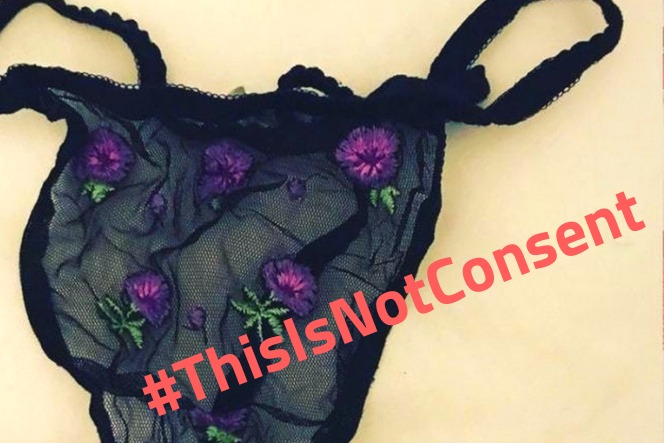If you thought that we had started to surpass the notorious victim blaming and blatant lack of support that has plagued the past for rape victims, you are very wrong. If you thought the world understood the notion of consent, you`re also mistaken.
A rape trial in Ireland, in which a 17-year-old plaintiff accusing a 27-year-old man of rape, occurred two weeks ago. What made this rape trial trend on social media, was that the man’s defense lawyer, Elizabeth O’Connell, held up for display the victim’s underwear in court.

O’Connell stated, “Does the evidence out-rule the possibility that she was attracted to the defendant and was open to meeting someone and being with someone? You have to look at the way she was dressed. She was wearing a thong with a lace front.”
This implied that the victim had consented to the sexual encounter due to the nature of her underwear. This resulted in an uproar in Ireland, with a member of Irish Parliament, Ruth Coppinger, raising her own underwear during parliament and stating, “It might seem embarrassing to show a pair of thongs here, how do you think a rape victim or a woman feels at the incongruous setting of her underwear being shown in a court?”
Let’s start with the outrage, and the archaic approach to rape that our world still holds. The man was acquitted of these claims. All because a girl’s underwear warrants consent – apparently.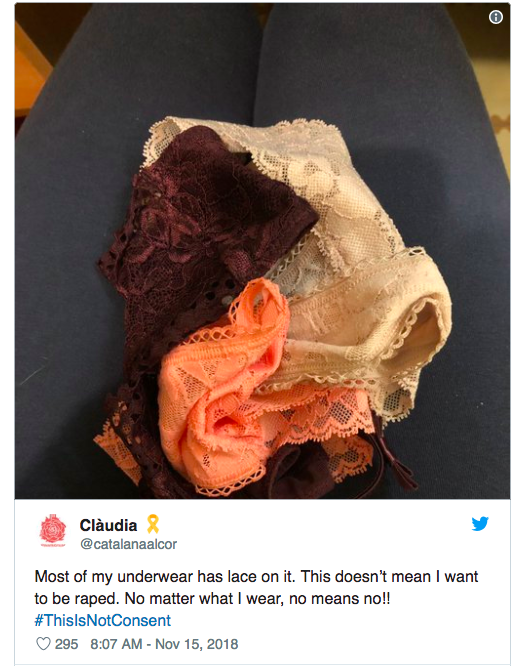
If I wear lacey thongs on a daily basis, is it permission for anyone to have sex with me? Am I asking for it?
Any sane person would argue that this claim is ridiculous, as consent can never be determined by what someone is wearing. Victim blaming must stop, both within our personal conversations and our legal approaches to these cases.
What was particularly outstanding within this case was the power of Twitter as a medium for change, for global conversation. Following this case, women took to Twitter to post photos of their own underwear and using the #ThisIsNotConsent hashtag to show support and outrage for the victim blaming that has occurred.
Susan Dillon spearheaded the movement, creating a Twitter account called “I Believe Her” to share women’s stories of victim blaming and to inspire change in this cycle.
These tweets demonstrate the power of social media as a tool of the modern age to protest archaic decisions.
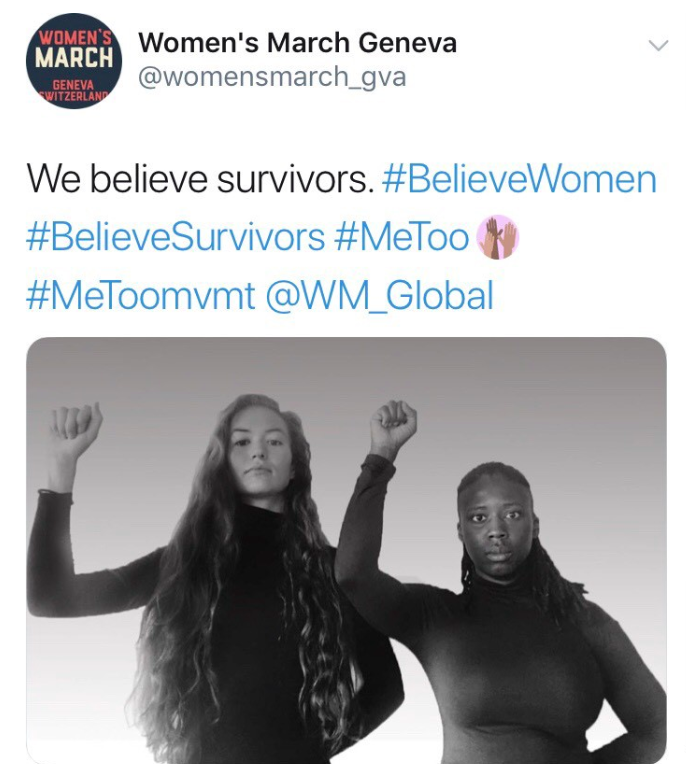
Other movements that have shown the power of Twitter include the #BelieveWomen and #BelieveSurvivors. They arose to show solidarity with survivors of sexual-assault following the Kavanaugh – Ford hearing. This was after allegations of sexual assault were made by Dr Christine Blasey Ford against Brett Kavanaugh in September following his nomination for Supreme court in the US.
The #BelieveWomen hashtag was a political statement to challenge the public’s criticism against survivors, and the dismissal of women’s stories like Ford’s during the trial. During the trial President Donald Trump had tweeted his doubts about Ford’s claims, just further showing how women’s stories can be automatically sidelined in the context of power.
Another movement following the Kavanaugh – Ford case was #WhyIDidntReport, the argument was made that Ford’s allegations were tactical and if the allegation was real then Ford would have reported right away.
Once again, anybody with actual knowledge of sexual assault would understand the terror that comes with reporting a case, particularly against a man of power. Alyssa Milano led the #WhyIDidntReport twitter movement, explaining why it can take years to talk about an assault due to fear, shame, denial and particularly the fear of not being believed.
#WhyIDidntReport gave a voice to the women who are too afraid to report due to the cycle that our society perpetuates of victim blaming and scepticism. There a million reasons to not report, but the system tends offer inadequate support for the victim as shown by the Kavanaugh – Ford case, and now the Irish rape trial.
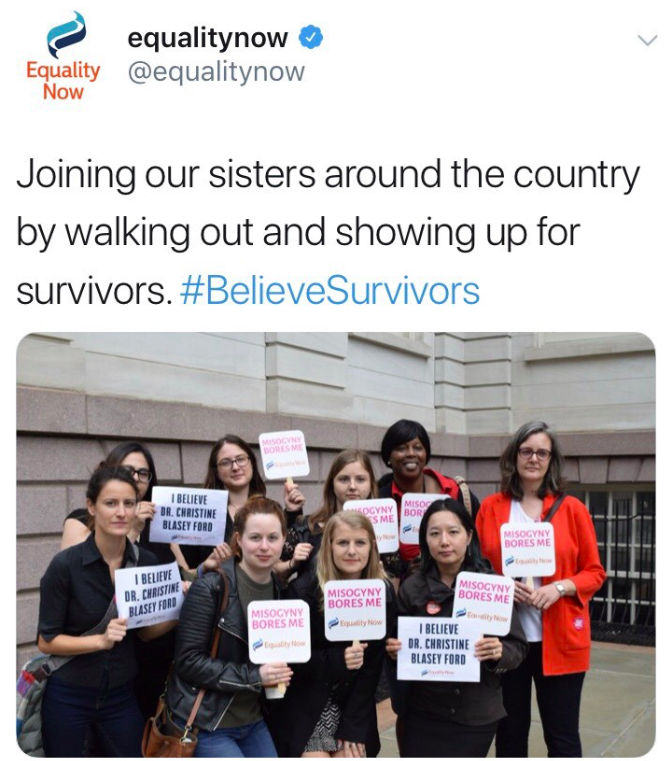
#TimesUp also held tremendous Twitter power, a hashtag to fight sexual assault, issues with consent, and inequality. The website TimesUpNow.com states, “The clock has run out on sexual assault, harassment and inequality in the workplace. It’s time to do something about it.” This hashtag was a response to the Harvey Weinstein allegations and the #Metoo movement. It was founded by Hollywood celebrities to fight against the prevalence of sexual assault and promote equality.
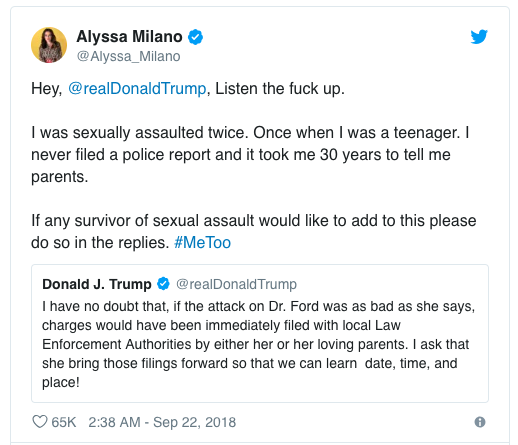
All of these Twitter movements show the power that social media holds to initiate change. The stories that they share show the backward focus that our world still holds with regards to sexual assault and consent.
Each of these movements on Twitter is aimed to support a cause, to support women who feel they do not have a voice, and to change our approach to victim blaming or denial. They force us to have much-needed conversations about sexual assault and to step-by-step support the victims in the way they deserve to be.

